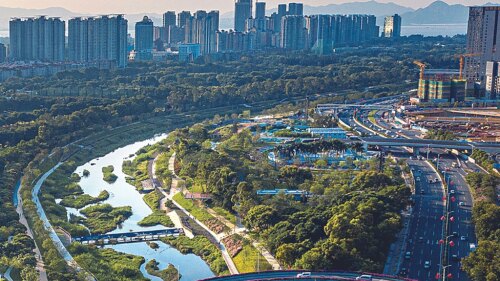Airport Urbanism: Infrastructure and Mobility in Asia
Max Hirsh
University of Minnesota Press
111 Third Avenue South, Suite 290
Minneapolis, MN 55401
www.upress.umn.edu.
March 2016. 232 pages. Paperback $25.00.
The gleaming white terminal on the cover of Airport Urbanism: Infrastructure and Mobility in Asia suggests a book much like many others, outlining a future (and present) of grand planning for the prosperity brought and dispatched via the wonders of air traffic. But this is not that book: it is a fascinating examination of the many elements that such forecasts leave out or overlook, and the countless ways in which societies have grown an infrastructure of air travel parallel to any intended arrangements, and well outside any comprehensive plans.
The Airport Express line to Hong Kong International Airport, expected to handle “an absolute majority of passengers,” particularly international travelers, is used by roughly 15 percent. Many passengers from afar have turned to a network of buses traveling from neighborhoods of the city, which take much longer but are one-third the cost of the train. Migrant workers often travel in moving vans along with their possessions. Others take a parallel train to the Tung Chung New Town, which deliberately stopped short of the airport (and is five times cheaper than the Airport Express), and then board buses for the remainder of the trip.
Tung Chung, envisioned as a logical home for airport employees, has attracted only a few, instead housing a large number of international residents—the population is about one-quarter non–ethnic Chinese. The circumstances suggest the best-laid of plans going awry not once but many times.
Hirsh’s account, “The first book-length study in airport infrastructure whose primary focus lies outside the West,” looks at the countless ways in which patterns of service have developed almost entirely outside of gaudy infrastructure, often due to rising middle-class use, unanticipated by planners focused on business travel, but also due to continuing constraints and strictures of cross-border mobility.
Hong Kong and surrounding cities in China offer an especially concentrated glimpse of the phenomenon. Access to Hong Kong from mainland China remains subject to fairly strict visa controls: a system of sealed ferries to Hong Kong Airport has developed from nearby cities in China, originating in such locations as a drab repurposed ferry terminal “flanked by aging tenements, a failed toy mall, and a wholesale seafood market.”
The author’s focus is “an architecture of incipient global mobility that has been inconspicuously inserted into ordinary places and unspectacular structures that are not typically associated with the infrastructure of international aviation, such as shopping malls, suburban new towns, theme parks, and industrial seaports.”
Hirsh also looks at a vast network of ticket sales and de facto terminals that have sprung up in implausible locations, including urban villages in Shenzhen and transit-oriented developments in Kuala Lumpur. Tickets are purchased in a travel center with “the look and feel of a busy mobile phone shop,” and travelers then embark via low-cost buses to the airport—some of which are themselves bare-bones terminals or other parallel infrastructure coping with being the afterthought that is the boom in budget travel across Asia.
Such exigencies are the predominant mode of airport use and access and yet, “with few exceptions, Southeast Asian airports are being built for a semi-mythological clientele of well-to-do passengers who, with each passing year, represent a smaller and smaller proportion of those who are in the air.” No plan will encompass all eventualities, and yet Hirsh’s is a strong case that contemporary Asian airport (and related development and transportation) planning continues to ignore trends that do not require any forecast to predict. Expenditures on showcase terminals will not serve airports whose most pressing need is simply more space: fancy trains will not relieve congestion when the majority of travelers cannot afford to use them.





